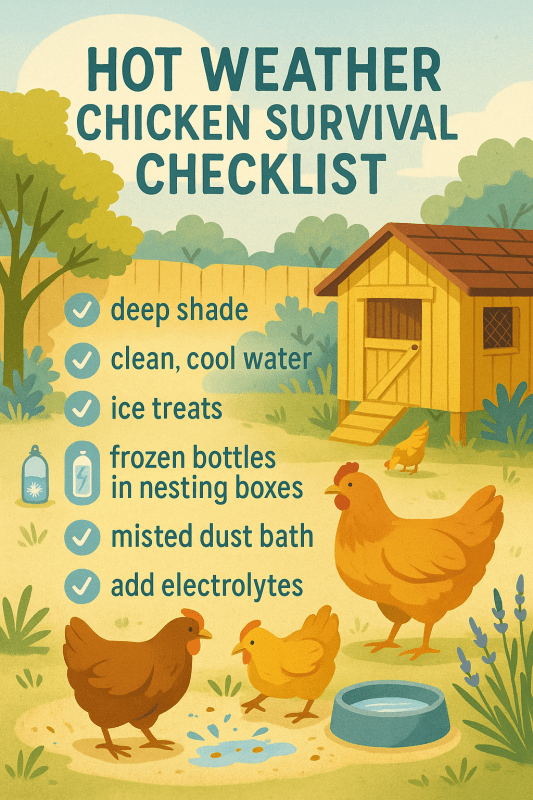Understanding the Threat: Identifying Common Predators and Their Behaviors
Best way to predator-proof your chicken coop
When it comes to protecting your chickens, understanding the potential threats they face is crucial. Identifying common predators and familiarizing yourself with their behaviors will enable you to take effective measures in order to predator-proof your chicken coop. Here are some of the most common predators and what you should know about them:
1. Raccoons
Raccoons are intelligent animals known for their dexterous paws. They possess a keen sense of smell and can be quite tenacious in their hunting efforts. These nocturnal creatures are notorious for raiding chicken coops, targeting both eggs and poultry. Raccoons are capable of opening latches and sliding doors, making it important to reinforce your coop with locks and secure fencing. To further deter raccoons, install motion-activated lights or play loud noises near your coop as they are sensitive to disturbances.
2. Foxes
Foxes are agile and cunning predators that pose a significant threat to backyard chickens. With their ability to dig and jump, foxes can easily gain access to coops that are not properly secured. They are predominately active at night but can also be seen during early morning or twilight hours. To discourage foxes, ensure your chicken coop has buried wire mesh beneath the ground, extending a foot or so from the coop walls. This prevents them from burrowing underneath and reaching your chickens.
3. Snakes
Snakes, particularly rat snakes, can be attracted to chicken coops due to the presence of eggs or chicks. These predators can squeeze through surprisingly small openings, so it's essential to have secure mesh wire on all openings, including windows and vents. Keep the grass around your coop short and remove any potential hiding places for snakes to reduce their attraction. Additionally, placing an apron of gravel around the perimeter of your coop can create an uncomfortable surface for snakes, deterring their approach.
4. Hawks and Owls
Hawks and owls are aerial predators that pose a threat to free-ranging chickens. These birds of prey have sharp talons and powerful beaks, making them formidable hunters. To protect your chickens from hawk and owl attacks, provide plenty of overhead cover, such as trees or netting, to obstruct their view of potential prey. Consider constructing a secure covered run where your chickens can still roam safely but have some protection from aerial predators.
5. Coyotes
Coyotes are adaptable predators that can be found in both rural and urban areas. Their ability to dig and climb fences means your coop should have impenetrable walls extending several feet into the ground. Electric fencing can also be an effective deterrent. It is important to note that coyotes are intelligent and may observe your coop for vulnerabilities, so a multi-layered defense approach is advisable.
By understanding the behaviors of common predators and taking proactive steps to predator-proof your chicken coop, you can ensure a higher level of safety and security for your beloved flock. Remember, a well-protected coop is crucial for the overall well-being of your chickens.
Fortifying Your Coop: Essential Measures and Strategies to Secure Your Chickens
Keeping your chickens safe from predators is of paramount importance when it comes to raising backyard poultry. A well-secured coop not only ensures the safety and well-being of your feathered friends but also provides you with peace of mind. Here, we will discuss some essential measures and strategies to fortify your chicken coop and predator-proof it effectively.
1. Sturdy Fencing
The first line of defense against predators is a sturdy and well-built fence. Opt for a fence made with heavy-gauge wire mesh or hardware cloth that extends at least a foot below the ground to prevent burrowing animals from accessing the coop. Make sure the fence is tall enough so that predators cannot jump over it easily.
2. Secure Doors and Windows
Coop doors and windows should be reinforced to prevent predators from prying them open. Use hardware cloth or predator-resistant mesh to cover windows and ventilation openings. Install locks or latches that are difficult for raccoons, possums, or other dexterous animals to manipulate. Remember, predators often attack during the night, so sturdy doors and windows are crucial.
3. Covered Runs
Providing a covered run is an effective way to ensure your chickens can safely enjoy outdoor time. You can use wire mesh or hardware cloth to create a secure roof that protects against aerial predators like hawks or owls. Make sure the mesh is small enough to prevent smaller predators such as snakes or rats from entering as well.
4. Digging Barriers
Many predators, especially those that burrow, will try to dig beneath the fence or coop. Digging barriers help deter these creatures. Consider burying hardware cloth or wire mesh at least a foot deep around the perimeter of the coop to prevent access through digging.
5. Nighttime Safety Measures
Predators are most active at night, so it's important to provide additional safety measures. Use motion-activated lights around the coop to deter nocturnal threats and make predators more visible. Lock your chickens inside the secure coop at night to minimize the risks. Installing an automatic door closer can ensure the coop remains sealed when darkness falls.
6. Good Landscaping Practices
Keeping the area around the coop tidy and free from debris can help prevent predators from approaching. Trim tree branches near the coop to avoid easy access for climbing predators. Remove tall grass or shrubs that may conceal attackers and create an open area that is easier for you to spot potential risks.
7. Regular Inspections and Maintenance
Regularly inspect your coop for any signs of wear, damage, or potential entry points for predators. Repair or reinforce weak areas immediately. Taking proactive measures to maintain a secure coop will go a long way in keeping your chickens safe.
By implementing these essential measures and strategies, you can significantly fortify your chicken coop and enhance the safety of your beloved flock. Remember, a secure coop ensures happy and healthy chickens that can thrive under your care.
Effective Deterrents and Surveillance: Keeping Predators at Bay Through Technology and Environmental Techniques
When it comes to protecting our precious chickens from predators, there are numerous strategies we can employ. Two effective approaches to predator-proofing your chicken coop involve the use of technology and implementing environmental techniques. Let's explore how these methods can help keep predators at bay and ensure the safety of our feathery friends.
1. Technology as a Deterrent:
Advancements in technology have given us a range of options to safeguard our chicken coops. Here are some effective technological deterrents that can be implemented:
- Electric Fencing: Installing an electric fence around your chicken coop can be a formidable deterrent for predators. It delivers a harmless but memorable shock to any intruders, discouraging them from attempting to gain access.
- Motion-Activated Lights: Darkness is a predator's ally, and installing motion-activated lights around the coop can startle potential predators and discourage them from approaching. It often proves to be an effective method in deterring nocturnal hunters.
- Security Cameras: Installing surveillance cameras near the chicken coop can provide you with real-time monitoring and serves as a deterrent to predators. The video footage can also help identify and track down any pesky intruders.
2. Environmental Techniques:
In addition to employing technology, implementing certain environmental techniques can further bolster the security of your coop. Here are some environmental techniques that can be highly effective:
- Secure Perimeter: Ensure that your chicken coop has a secure perimeter. This involves digging a trench around the coop and burying wire mesh to prevent predators from burrowing under the fence, while also making sure the fence itself is high enough to discourage predators from jumping over.
- Trimmed Vegetation: Keeping the area surrounding your coop well-maintained is crucial in preventing predators from using overgrown vegetation as hiding spots. Regularly trimming bushes, trees, and tall grasses will eliminate potential hiding places and discourage predators from approaching.
- Nesting Boxes: Place your chicken coop away from potential climbing aids, such as trees or sheds, to prevent predators from reaching the coop's roof and gaining easy access to your chickens. It's also important to secure any open areas, such as gaps under the roof or vents, using appropriate materials.
By combining these technological and environmental techniques, you can create a fortified fortress for your chicken coop, significantly reducing the risk of predator attacks. Remember, a multi-layered defense strategy is always the most effective approach to ensure the safety and well-being of your beloved chickens.


